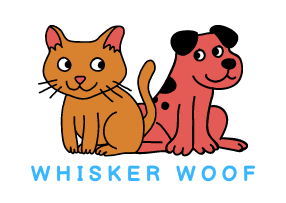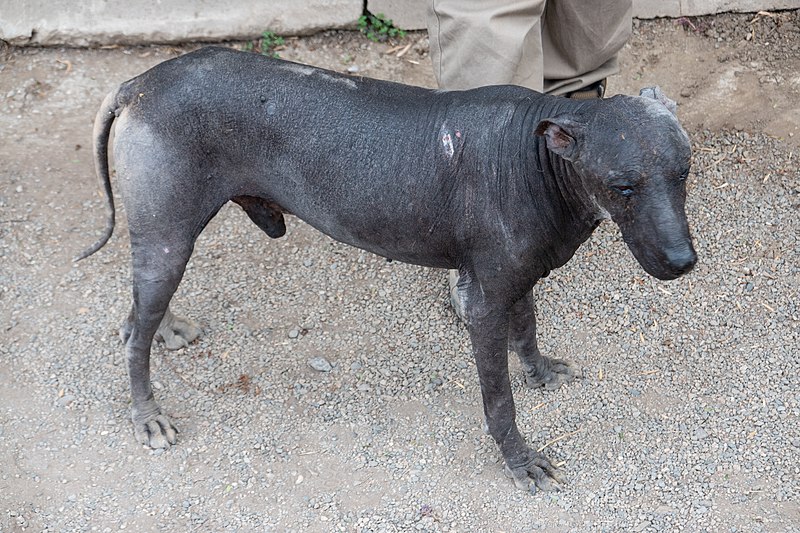Is your furry friend sporting a dog tail down after grooming? It’s not uncommon for dogs to display this behavior following a session at the groomer’s. While it may raise concerns for pet owners, understanding the reasons behind it can offer reassurance and help address any potential issues.
After grooming, a dog’s tail may hang low due to a range of factors. Sometimes, the experience of being bathed, clipped, and handled in unfamiliar ways can be a bit overwhelming for them. Additionally, the use of grooming tools, such as clippers or brushes, might cause mild discomfort or sensitivity, leading to a lowered tail posture.
In this article, we’ll delve into the reasons why dogs may exhibit this behavior after a grooming session. We’ll also provide tips on how to help your furry companion feel more comfortable and at ease during and after their grooming appointments. Understanding your pet’s reactions can lead to a more positive grooming experience for both of you.
Possible Causes for a Dog’s Tail Drooping After Grooming
When a dog’s tail droops after grooming, it can be a cause for concern for pet owners. Understanding the potential reasons behind this behavior is crucial for ensuring your furry friend’s well-being. Here are some common causes:
- Physical discomfort: Grooming involves a variety of activities, from brushing to nail trimming. If done improperly or if the dog has sensitive areas, it can lead to physical discomfort. This discomfort may cause the dog to lower its tail as a sign of distress.
- Overstimulation: Grooming can be an intense experience for some dogs, especially if it’s their first time or if they have a nervous disposition. The combination of unfamiliar scents, sounds, and sensations can be overwhelming, causing the dog to display submissive body language, including a lowered tail.
- Stress or anxiety: Dogs can experience stress or anxiety during grooming, especially if they associate it with negative experiences. Previous encounters with sharp tools, uncomfortable handling, or a stressful environment can contribute to a drooping tail.
- Unfamiliar environment: Grooming salons or even a new grooming area at home can be unfamiliar territory for dogs. This change in environment can make them feel uneasy, leading to a lowered tail.
- Previous negative experiences: If a dog has had a traumatic grooming experience in the past, they may associate grooming with discomfort or fear. This negative association can lead to a drooping tail in subsequent sessions.
- Health issues: It’s essential to rule out any underlying health problems that could be causing discomfort. Conditions such as joint pain, muscle soreness, or skin irritations can make grooming uncomfortable, leading to a lowered tail.
It is crucial to handle your dog with care during grooming and ensure that the grooming tools are used correctly to prevent any accidental injuries to their tail. If you notice your dog’s tail drooping after grooming, it is best to consult a veterinarian for a proper diagnosis and treatment.
Impact of Grooming on a Dog’s Tail Position
Understanding how grooming impacts a dog’s tail position can help owners better care for their furry friends.
When you take your dog to the groomer, they may trim or shave the hair around the tail area. This can affect the tail’s natural position and cause it to droop. The weight of the hair being removed can make the tail feel lighter, leading to a change in its position.
Additionally, grooming may involve handling the tail, which could cause discomfort or pain if done improperly. It’s important to choose a groomer who is experienced and gentle with your dog’s tail.
Regular grooming sessions can help maintain a healthy tail position by preventing the matting or tangling of the hair. By understanding how grooming impacts a dog’s tail, you can ensure that your furry friend stays happy and comfortable.
Tips for Preventing Tail Drooping in Dogs After Grooming
To prevent drooping, it’s important to choose a gentle and experienced groomer for your furry friend. When selecting a groomer, ask about their experience and training in handling dogs’ tails.
A skilled groomer knows how to handle a dog’s tail with care, avoiding any excessive pulling or tugging that could cause discomfort or injury. Additionally, make sure to communicate your concerns and preferences regarding your dog’s tail position to the groomer beforehand. They should be receptive to your input and be willing to work with you to achieve the desired outcome.
Here are some more helpful tips:
- Regular desensitization: Gradually introduce your dog to grooming tools and procedures in a calm and reassuring environment. Start with short sessions and gradually increase the duration over time.
- Positive reinforcement: Reward your dog with treats and praise during and after grooming sessions. Positive associations will make the experience more enjoyable and reduce anxiety.
- Check for health issues: Regularly inspect your dog for signs of discomfort, such as lumps, skin irritations, or joint stiffness. Address any health concerns promptly to ensure they’re comfortable during grooming.
- Create a calm environment: Minimize distractions and loud noises during grooming. A quiet, soothing environment can help your dog feel more relaxed and at ease
- Take breaks if necessary: If your dog becomes anxious or uncomfortable during the grooming process, take short breaks to allow them to relax and regroup.
Regularly brushing and combing your dog’s tail at home can also help prevent tangles and mats, which can contribute to drooping. Remember, a gentle touch and open communication are key to keeping your furry friend’s tail happy and healthy after grooming.
Recognizing the Signs and Symptoms of Tail Drooping in Dogs
When a dog’s tail is drooping, it may be a sign of discomfort or injury. It is important to pay attention to your furry friend’s body language and understand what they are trying to communicate to you.
A drooping tail can indicate that your dog is feeling sad, anxious, or in pain. It could also mean that they have suffered a tail injury, such as a sprain or a fracture.
If you notice your dog’s tail is consistently drooping, it is recommended to take them to the veterinarian for a thorough examination. The vet will be able to determine the underlying cause of the drooping tail and provide appropriate treatment.
How to Help a Dog With a Droopy Tail After Grooming
If your furry friend’s tail is droopy after grooming, you can gently comfort them and provide extra love and attention to help them feel better.
Dogs can sometimes feel a bit down or even anxious after a grooming session, especially if they are not used to it.
First, give them some quiet time to relax and adjust. Sit with them and stroke their fur, reassuring them that everything is okay.
Offer them their favorite treats or toys to distract them and make them feel happier.
Additionally, spend some quality time together, engaging in activities they enjoy, like going for walks or playing fetch.
The key is to shower them with love and attention, showing them that they are safe and loved.
Frequently Asked Questions
How Often Should I Groom My Dog’s Tail to Prevent Drooping?
You should groom your dog’s tail regularly to prevent drooping.
Regular grooming helps maintain the proper shape and health of the tail, ensuring it stays upright and happy.
Can Certain Grooming Techniques or Tools Lead to Tail Drooping in Dogs?
Certain grooming techniques or tools can lead to tail drooping in dogs. It’s important to be cautious and gentle when grooming your dog’s tail to avoid any unnecessary strain or discomfort.
Are Certain Dog Breeds More Prone to Tail Drooping After Grooming?
Certain dog breeds may be more prone to tail drooping after grooming. Factors such as the tail shape, length, and muscle tone may contribute to this.
It’s important to be aware of your dog’s breed traits and handle their grooming needs accordingly.
Can Stress or Anxiety During Grooming Contribute to a Dog’s Tail Drooping?
Yes, stress or anxiety during grooming can contribute to your dog’s tail drooping.
It’s important to create a calm and positive environment to help alleviate any potential stress your dog may experience.
Are There Any Home Remedies or Exercises That Can Help Improve a Dog’s Tail Position After Grooming?
There are a few home remedies and exercises you can try to improve your dog’s tail position after grooming.
Consider gently massaging the tail and using warm compresses. These can help relax the muscles and alleviate any discomfort your dog may be experiencing.
Engaging in regular exercise is also beneficial. Exercise helps strengthen the muscles surrounding the tail, which can improve its position over time.
Remember to be patient and consistent with these remedies and exercises, as it may take some time before you see noticeable improvements.
Conclusion
In conclusion, if you notice your dog’s tail drooping after grooming, there could be several possible causes. One of these causes could be discomfort or pain during the grooming process.
It’s important to understand the impact of grooming on a dog’s tail position and take steps to prevent tail drooping in the future. By recognizing the signs and symptoms of tail drooping, you can provide the necessary help and support to your furry friend.
Remember, a happy and healthy tail is a wagging tail!


1 thought on “Dog Tail Down After Grooming: Causes and How to Prevent”